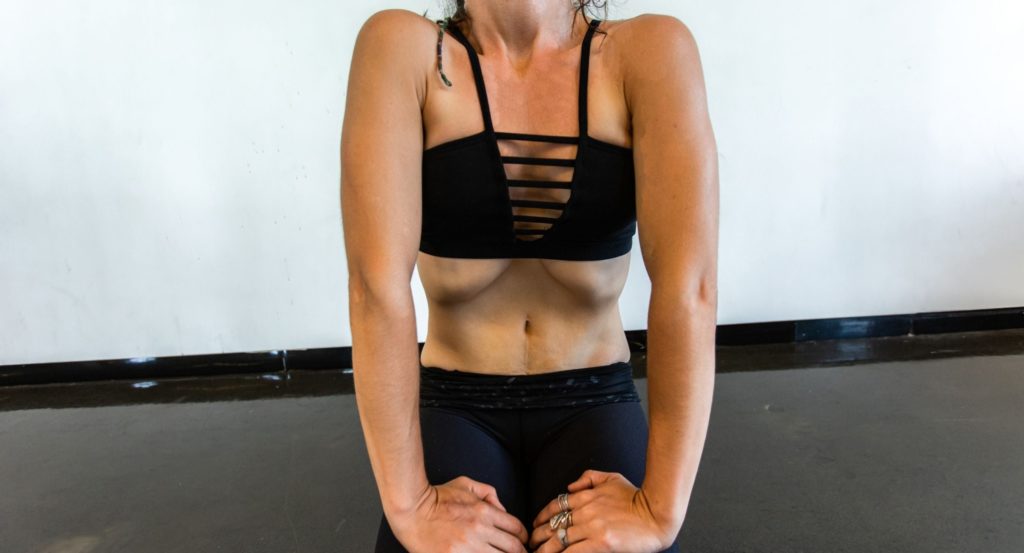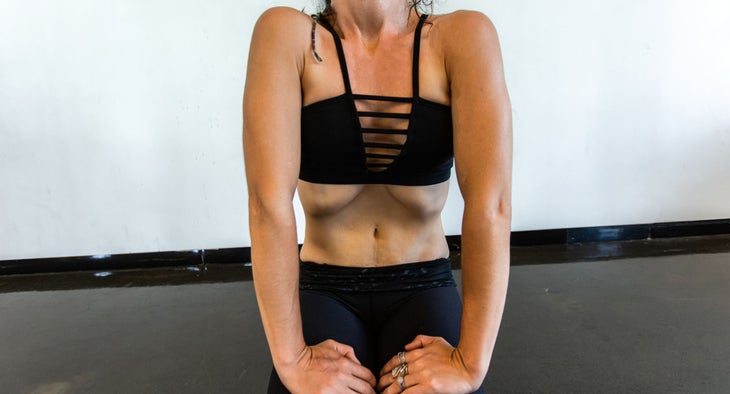
2 Simple Moves to Build Core Strength
If you’re a fitness junkie (guilty!), you know how important it is to build core strength for your favorite heavy lifts like squats, deadlifts and lunges. While these big moves do build core strength on their own, adding extra core work to your routine can make a huge difference in lifting form and personal records.
But what are the most effective moves for building real, functional strength in your core?
Dr. Sara Solomon, BSc PT, DMD, creator of Strength Academy, is an expert in building functional core strength you can use in a variety of exercise disciplines — including some very impressive pole-dancing routines. Rather than focusing on the aesthetics of the abs, Solomon takes a more anatomical approach to build core strength, focusing her training on developing the transverse abdominis (or TVA).
“The TVA is a very important deep core muscle because it is your body’s primary stabilizer,” Solomon explains. “Having a strong TVA provides the foundation required to get stronger and more mobile.” She says that focusing exclusively on your rectus abdominis (aka your six-pack) with endless crunches can exacerbate existing weaknesses in your TVA. This can lead to issues from lower-back pain and tight hips to diastasis recti, a condition in which the rectus abdominal muscles separate. “That’s why it’s so important not to neglect your TVA,” Solomon says.
To build core strength and avoid these and other problems, Solomon recommends just two movements: The stomach vacuum and the L-sit.
1. Stomach Vacuum

While some of you may be familiar with this as a bodybuilder exercise, the stomach vacuum, or Uddiyana Bandha, is actually a classic yoga move and one of three bandha asanas for strengthening and toning the abdominal muscles. As Solomon explains, this move helps you get connected with your entire “core box”: TVA, diaphragm and pelvic floor. It also can be used to practice meditative, controlled breathing and to energize the body.
To perform this move, stand up straight with your arms overhead and take a deep nasal breath in. Exhale all the air out as you fold forward and place your hands on your thighs. Be sure to exhale all the air out, even when you think you’ve reached the end. Use your abs to push as much air out as you possibly can.
Next, fully relax your belly and engage your pelvic floor. This creates a lock. Make a swallowing action with your throat, and when you feel your throat muscles tighten, hold it. This creates the throat lock. Keeping your hands on your thighs, take a fake inhalation with your mouth closed and your throat still locked. Do this by rising up slightly while in the bent-over position. The pressure created by your diaphragm trying to draw air into the lungs causes your abdominal contents to be sucked in and upward. This should create a hollow cave or “vacuum” in your lower abdomen. “It feels like the contents of your abdomen are being gently tugged upward by suction,” Solomon says. “This gets the diaphragm to move upward and out of the way.”
Hold the vacuum here as long as you feel comfortable. Solomon recommends no longer than 10 seconds for beginners. At the end of the hold, gently release the suction and slowly inhale, standing back up. Take some slow, deep breaths. Solomon recommends five solid attempts on an empty stomach every morning, and according to her, it’s best to hold off during menstruation.
Once you have mastered the stomach vacuum, then you can try to learn Agni Sara — aka the “rectus loaf” — and Nauli Kriya (abdominal churning). Agni Sara is when you push the rectus abdominals out while continuing to maintain the vacuum. Nauli Kriya involves massaging or “churning” your abdominal muscles while holding the vacuum. This move in particular helps strengthen the deep abdominal muscles while also massaging and stimulating your internal organs. It is great for fighting indigestion and constipation, but be patient: It takes time to master these.
2. L-Sit
According to Solomon, the L-sit is the ultimate test of core strength. It’s a chance to see how your body is working in synergy and if the TVA is engaging correctly. “The L-sit, when performed in a way that gets the hips back behind the hands, will really target your TVA,” Solomon says.
To perform the L-sit, place your hands on either side of your hips and pull your hips back. Solomon recommends using 4-inch yoga blocks to add height and make it easier when you’re first starting out. Press into your hands and lift your hips off the ground. Keeping your legs straight and your toes pointed, engage your abs and attempt to lift your legs off the ground
“Don’t worry if you cannot lift your legs off the ground at the beginning,” Solomon says. “Just focus on pushing hard into the yoga blocks and getting the hips back.” Breathe calmly through your nose to help you connect to your TVA. (Do not hold your breath!) Focus on finding the “hellish” feeling in your TVA. Try to hold for 30 seconds or as long as you can, and repeat for five solid attempts. Do this exercise three to four times a week. You also can try this move at the gym, using the variation described in “6 Band-Assisted Exercises to Help You Master Challenging Movements.”
As with any challenging new move, the mantra for both these exercises is practice, practice, practice. “Remember, we all struggle when we first learn something,” Solomon says. “Make the effort to keep going. Keep giving it your all. The best way to succeed is to consistently show up. Enjoy the experience of figuring out your body.”
Published at Wed, 13 Apr 2022 11:30:52 -0700






